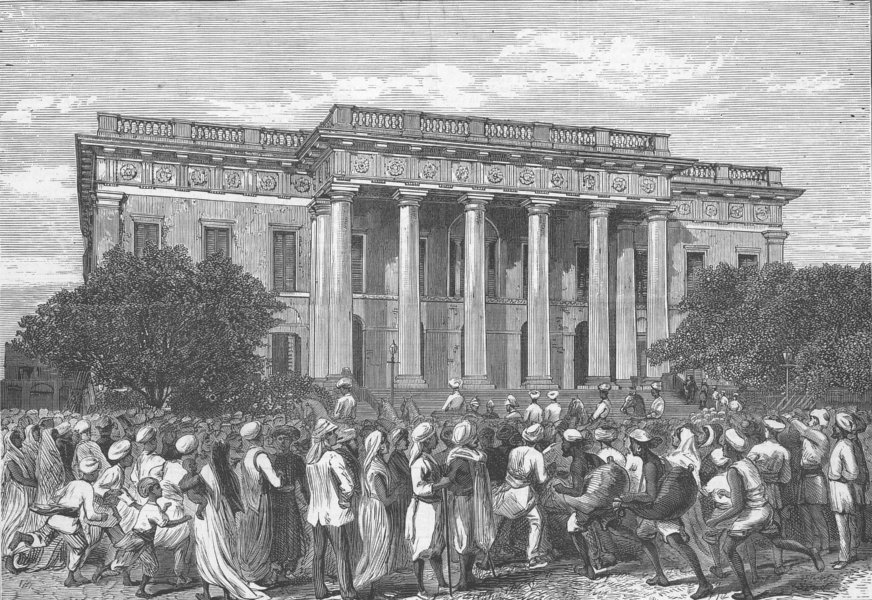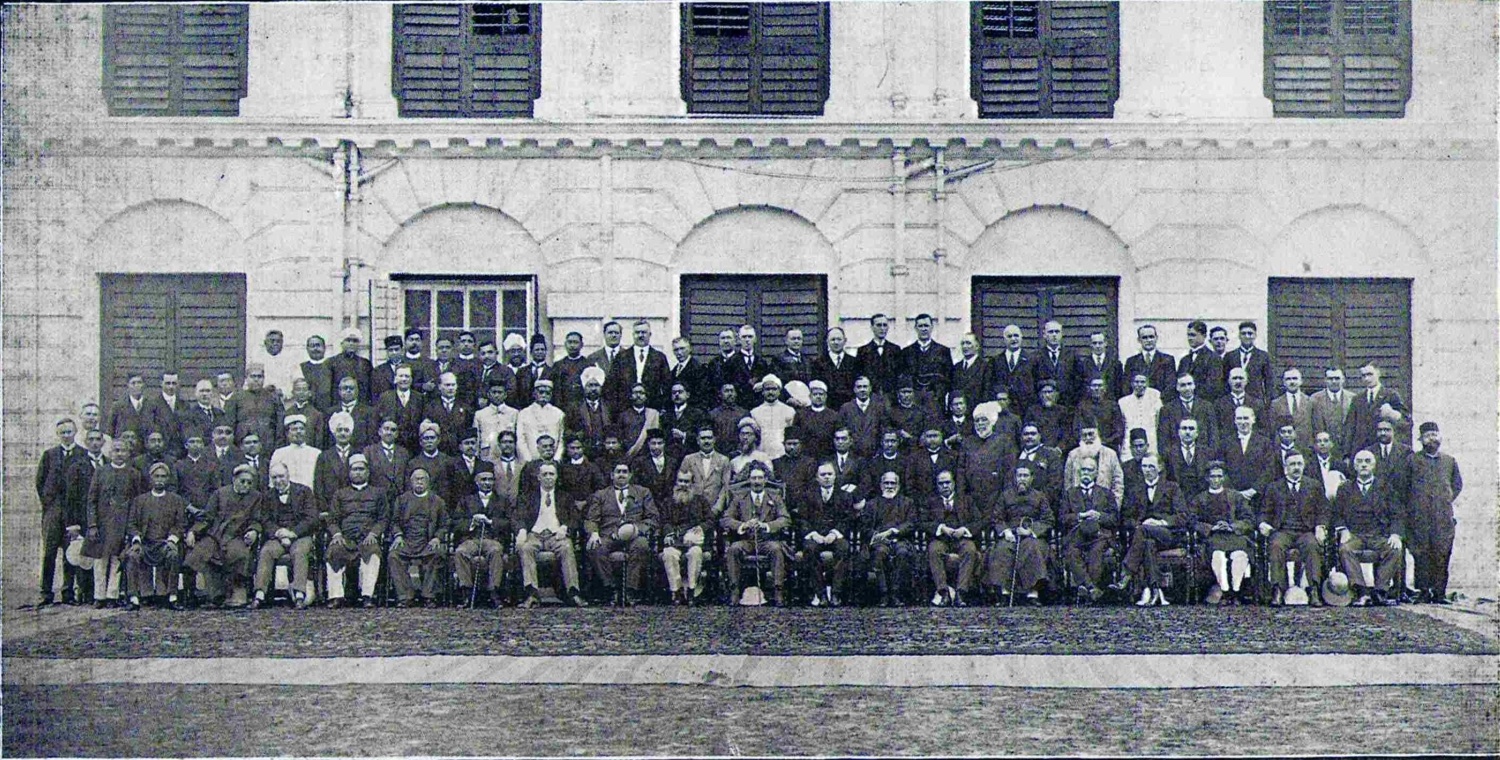Bengal Legislative Council on:
[Wikipedia]
[Google]
[Amazon]
The Bengal Legislative Council ( was the legislative council of

 The council grew from 12 members in 1862, to 20 in 1892, 53 in 1909, 140 in 1919 and 63–65 in 1935.
The council grew from 12 members in 1862, to 20 in 1892, 53 in 1909, 140 in 1919 and 63–65 in 1935.
 Under the Act of 1919, the council had 140 members. They included 92 seats assigned to general constituencies and 22 seats assigned to separate electorates, including Muslims, Christians and Anglo-Indians. The
Under the Act of 1919, the council had 140 members. They included 92 seats assigned to general constituencies and 22 seats assigned to separate electorates, including Muslims, Christians and Anglo-Indians. The
British Bengal
The Bengal Presidency, officially the Presidency of Fort William and later Bengal Province, was a subdivision of the British Empire in India. At the height of its territorial jurisdiction, it covered large parts of what is now South Asia and ...
(now Bangladesh
Bangladesh (}, ), officially the People's Republic of Bangladesh, is a country in South Asia. It is the eighth-most populous country in the world, with a population exceeding 165 million people in an area of . Bangladesh is among the mos ...
and the Indian state of West Bengal
West Bengal (, Bengali: ''Poshchim Bongo'', , abbr. WB) is a state in the eastern portion of India. It is situated along the Bay of Bengal, along with a population of over 91 million inhabitants within an area of . West Bengal is the fourt ...
).
It was the legislature of the Bengal Presidency during the late 19th and early 20th centuries. After reforms were adopted in 1937, it served as the upper chamber
An upper house is one of two chambers of a bicameral legislature, the other chamber being the lower house.''Bicameralism'' (1997) by George Tsebelis The house formally designated as the upper house is usually smaller and often has more restri ...
of the Bengali legislature until the partition of India
The Partition of British India in 1947 was the Partition (politics), change of political borders and the division of other assets that accompanied the dissolution of the British Raj in South Asia and the creation of two independent dominions: ...
.
History
The council was established under theIndian Councils Act 1861
The Indian Councils Act 1861 was an Act of the Parliament of the United Kingdom that transformed India's executive council to function as a cabinet run on the portfolio system. This cabinet had six "ordinary members", who each took charge of a s ...
. It was dominated by Europeans and Anglo-Indians, with natives as a minority, until reforms in 1909. Under the Indian Councils Act 1892
The Indian Councils Act 1892 was an Act of British Parliament that introduced various amendments to the composition and function of legislative councils in British India. Most notably, the act expanded the number of members in the central and ...
and Indian Councils Act 1909
The Indian Councils Act 1909, commonly known as the Morley–Minto or Minto–Morley Reforms, was an act of the Parliament of the United Kingdom that brought about a limited increase in the involvement of Indians in the governance of British In ...
, representatives of municipalities, district boards, city corporations, universities, ports, plantations, zamindars, Muslim electorates and chambers of commerce were inducted. Native Bengali representation gradually increased. Its voting power was limited, particularly on budgets. It was delegated "transferred subjects" of education, public health, local government, agriculture and public works; while the "reserved subjects" of finance, police, land revenue, law, justice and labour remained with the Executive Council headed by the Governor of Bengal. Between 1905 and 1912, the council's geographical coverage was divided and partly delegated to the Eastern Bengal and Assam Legislative Council
The Eastern Bengal and Assam Legislative Council () was the legislative council of Eastern Bengal and Assam, a province of the British India covering Bangladesh and Northeast India. It would meet in the Government House of Dacca, the provinci ...
. During the period of dyarchy
Diarchy (from Greek , ''di-'', "double", and , ''-arkhía'', "ruled"),Occasionally misspelled ''dyarchy'', as in the ''Encyclopaedia Britannica'' article on the colonial British institution duarchy, or duumvirate (from Latin ', "the office of ...
, the council was boycotted by the Congress Party and Swaraj Party; but constitutionalists in the Bengal Provincial Muslim League continued to be active members.
Under the Government of India Act 1935, the council became the upper chamber of the legislature of Bengal.
Membership

 The council grew from 12 members in 1862, to 20 in 1892, 53 in 1909, 140 in 1919 and 63–65 in 1935.
The council grew from 12 members in 1862, to 20 in 1892, 53 in 1909, 140 in 1919 and 63–65 in 1935.
Act of 1861
Under the Act of 1861, the council included 12 members nominated by the Lieutenant Governor of Bengal. The members included four government officials, four non-governmentAnglo-Indian
Anglo-Indian people fall into two different groups: those with mixed Indian and British ancestry, and people of British descent born or residing in India. The latter sense is now mainly historical, but confusions can arise. The ''Oxford English ...
s and four Bengali gentlemen. From 1862 to 1893, 123 persons were nominated to the council, of whom only 49 were native Indian members, 35 were members of the British Indian Association
British Indian Association was a political organization in the 19th century in India. Its rival was the Indian National Association.
History
British Indian Association was established on 29 October 1851 in Kolkata, India with Radhakanta Deb as ...
and 26 were aristocrats.
Act of 1892
Under the Act of 1892, the Lieutenant Governor could nominate 7 members on the recommendation of theBengal Chamber of Commerce
The Bengal Chamber of Commerce and Industry is a non-governmental trade association and advocacy group based in West Bengal, India. It is the oldest chamber of commerce in India, and one of the oldest in Asia.
Established in 1853, finding its o ...
, municipalities
A municipality is usually a single administrative division having corporate status and powers of self-government or jurisdiction as granted by national and regional laws to which it is subordinate.
The term ''municipality'' may also mean the go ...
, district councils, the University of Calcutta
The University of Calcutta (informally known as Calcutta University; CU) is a Public university, public collegiate university, collegiate State university (India), state university in India, located in Kolkata, West Bengal, India. Considered ...
and the Corporation of Calcutta.
Act of 1909
Under the Act of 1909, the council had the following composition. *Ex-officio members **Lieutenant Governor **Executive Councillors- 2 *Nominated members **Officials- 17 maximum **Indian commerce- 1 **Planters- 1 **Experts- 2 **Others- 3 minimum *Elected members **Corporation of Calcutta- 1 **University of Calcutta- 1 **Municipalities- 6 **District boards- 6 **Landholders- 5 **Muhammadans- 4 **Bengal Chamber of Commerce- 2 **Calcutta Traders Association- 1Act of 1919
 Under the Act of 1919, the council had 140 members. They included 92 seats assigned to general constituencies and 22 seats assigned to separate electorates, including Muslims, Christians and Anglo-Indians. The
Under the Act of 1919, the council had 140 members. They included 92 seats assigned to general constituencies and 22 seats assigned to separate electorates, including Muslims, Christians and Anglo-Indians. The Port of Chittagong
The Chittagong Port ( bn, চট্টগ্রাম বন্দর) is the main seaport of Bangladesh. Located in Bangladesh's port city of Chittagong and on the banks of the Karnaphuli River, the port handles over 90 percent of Bangladesh's ...
, the Port of Calcutta
Port of Kolkata or Kolkata Port, officially known as Syama Prasad Mookerjee Port Trust (formerly Kolkata Port Trust), is the only riverine major port of India, located in the city of Kolkata, West Bengal, around from the sea. It is the olde ...
, the jute
Jute is a long, soft, shiny bast fiber that can be spun into coarse, strong threads. It is produced from flowering plants in the genus ''Corchorus'', which is in the mallow family Malvaceae. The primary source of the fiber is ''Corchorus olit ...
industry, the tea
Tea is an aromatic beverage prepared by pouring hot or boiling water over cured or fresh leaves of '' Camellia sinensis'', an evergreen shrub native to East Asia which probably originated in the borderlands of southwestern China and northe ...
industry were also represented.
Act of 1935
As the upper chamber under the Government of India Act 1935, the council had the following composition. * General elected seats - 10 * Muslim electorate seats - 17 * European electorate seats - 3 * Nominees of theBengal Legislative Assembly
The Bengal Legislative Assembly () was the largest legislature in British India, serving as the lower chamber of the legislature of Bengal (now Bangladesh and the Indian state of West Bengal). It was established under the Government of India A ...
- 27
* Nominees of the Governor of Bengal- 'not less than 6 and not more than 8'.
Tenure
The legislative council was initially given a three-year tenure. It became a permanent body under the Government of India Act 1935, which required one third of its members to retire.Head of the council
The Lieutenant Governor was the ex-officio president of the council until 1909, when the council was given the right to elect its president and deputy president.References
External links
* {{Cite book , url=http://archive.org/details/in.ernet.dli.2015.49306 , title=Bengal Legislative Council Proceedings.1921(v4) , date=1921 1862 establishments in British India 1947 disestablishments in British India Bengal Presidency Historical legislatures in Bangladesh Defunct upper houses in India